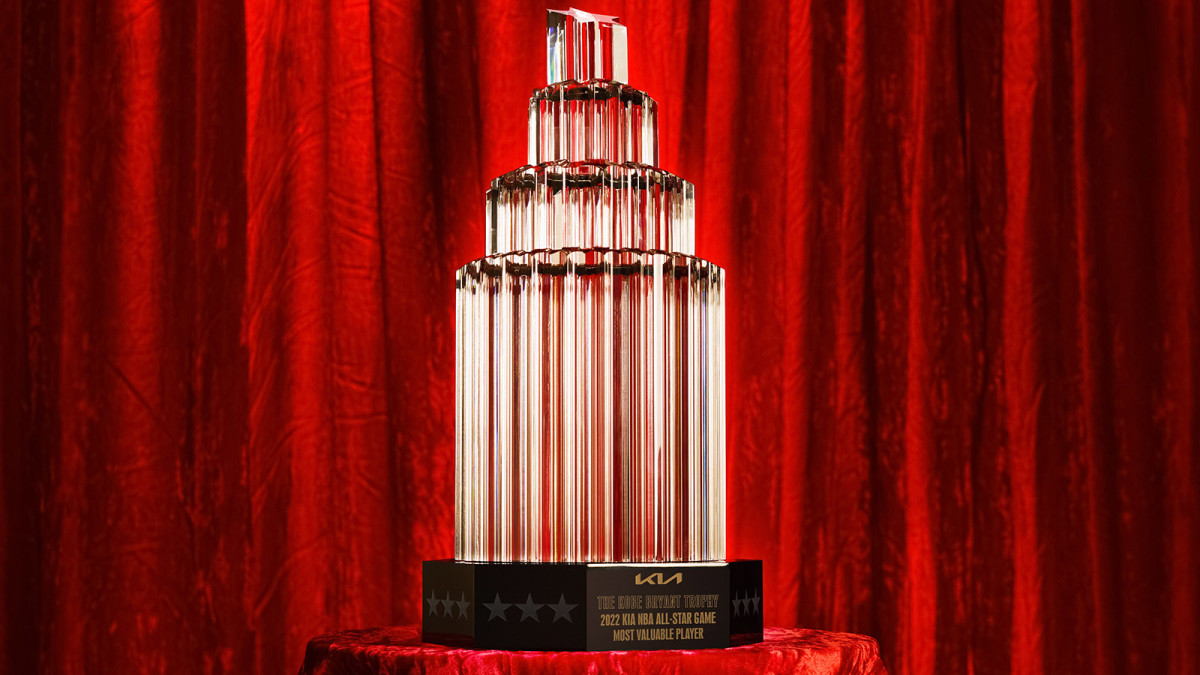Behind the Redesign of the Kobe Bryant Trophy

Since March 2020, around 20 employees from various departments in the NBA office have met nearly every Friday at 9 a.m. to discuss awards. They don’t gather to debate the merits of who should be the league’s MVP or Rookie of the Year but instead focus on the tangible reminders of player achievements: trophies. Now, after nearly two years of reimagining some of the league’s hardware, their efforts will be on full display.
On Thursday, the NBA plans to unveil revamped designs of seven trophies that will be handed out during the upcoming All-Star weekend in Cleveland. New-look All-Star rings, given to players in recognition of their selection, and medals for the Rising Stars champions will also be released. But among the redesigned pieces is the Kobe Bryant Trophy, named for the late Lakers star in the aftermath of his death and given annually to the All-Star Game MVP.
Trophy designs have been on the mind of Christopher Arena, the NBA’s head of on-court and brand partnerships, and his team in recent years. The debuts of the NBA2K League in 2018 and Basketball Africa League last May required them to think more about them. The NBA’s 75th anniversary season also served as a fitting peg to revisit the topic.
For the All-Star trophies, the NBA collaborated with designer Victor Solomon, who has received acclaim for his “Literally Balling” project, in which he explores the symbols of basketball as a platform for conceptual storytelling. Solomon says the Kobe Bryant Trophy design in particular is especially powerful.
“It needed to be as innovative and as groundbreaking as [Kobe] was as a player,” Solomon says.
Solomon and Arena cycled through at least three different concepts and multiple versions of each before settling on the final design of the Kobe Bryant Trophy, which is littered with dual meanings. Its eight-sided base is two inches tall, a nod to Bryant’s original number and 2002 All-Star Game MVP. It features four levels, the first of which has 24 stars, representing each participant in the game as well as Bryant’s jersey number.

The second level is nine inches in height (the Lakers star won the All-Star Game MVP in 2009) and has 10 stars (Bryant wore No. 10 in USA Basketball competition). Level three has five stars (he won five championships) and is 11 inches (he won his third All-Star Game MVP in ’11). The fourth and final level has just a single star, which is two inches tall—he won the league MVP only once but took home two Finals MVP awards throughout his 20-year career.
Thursday’s unveiling is far from the first time the NBA’s All-Star Game MVP award has gotten a facelift. A look at the trophies Bob Pettit and Bill Russell were given shows how far the league has come on that front. But in redesigning it now, the league sought to push the honor in a new direction.
“We were like, ‘There’s gotta be more deeper storytelling to this,’” Arena says. “And that’s where I think this became so unique.”
Solomon grew up in Boston as a Celtics fan. He subsequently spent time in San Francisco, adopting the Warriors through their “lean years,” in his words, as his West Coast team. He has since settled in Los Angeles, where he says he’s merged his past rooting interests and has become more so just “a fan of the game.”
He watched firsthand as Angelinos mourned Bryant’s death in the aftermath of the Jan. 26, 2020, crash. In working on this project, he remained cognizant of wanting to pay tribute to one of the city’s beloved stars and looks forward to watching the Kobe Bryant Trophy being raised by the All-Star Game’s brightest stars for years to come.
“All-Star weekend, as a whole, has become such an important cultural moment,” he says. “To contribute to the celebratory permanence of those moments is really special.”
More NBA Coverage:
• The Defense Strikes Back
• NBA Trade Deadline: Five Trades Worth Discussing
• NBA All-Stars: Predicting the Eastern Conference Roster
• NBA All-Stars: Predicting the Western Conference Roster
